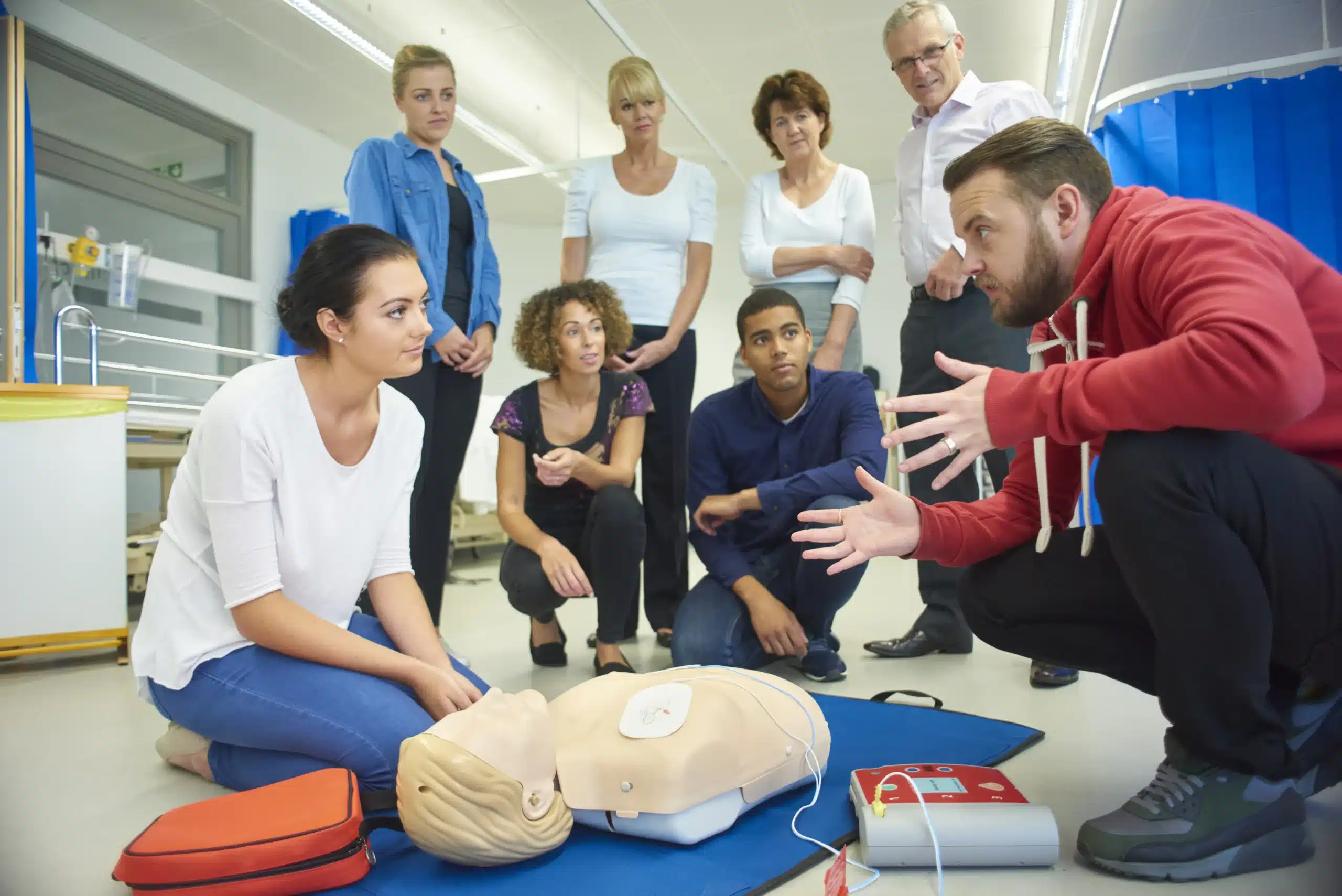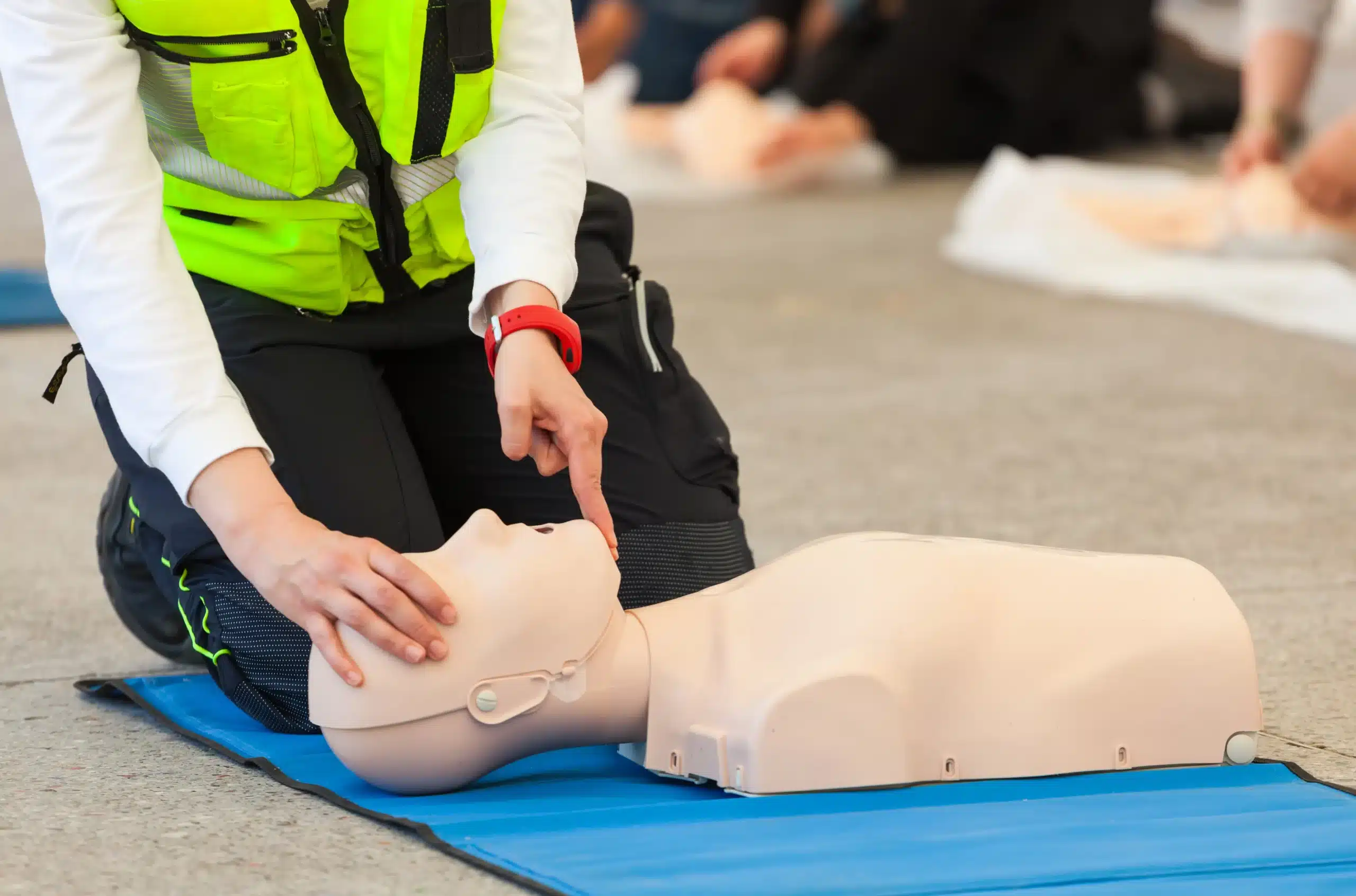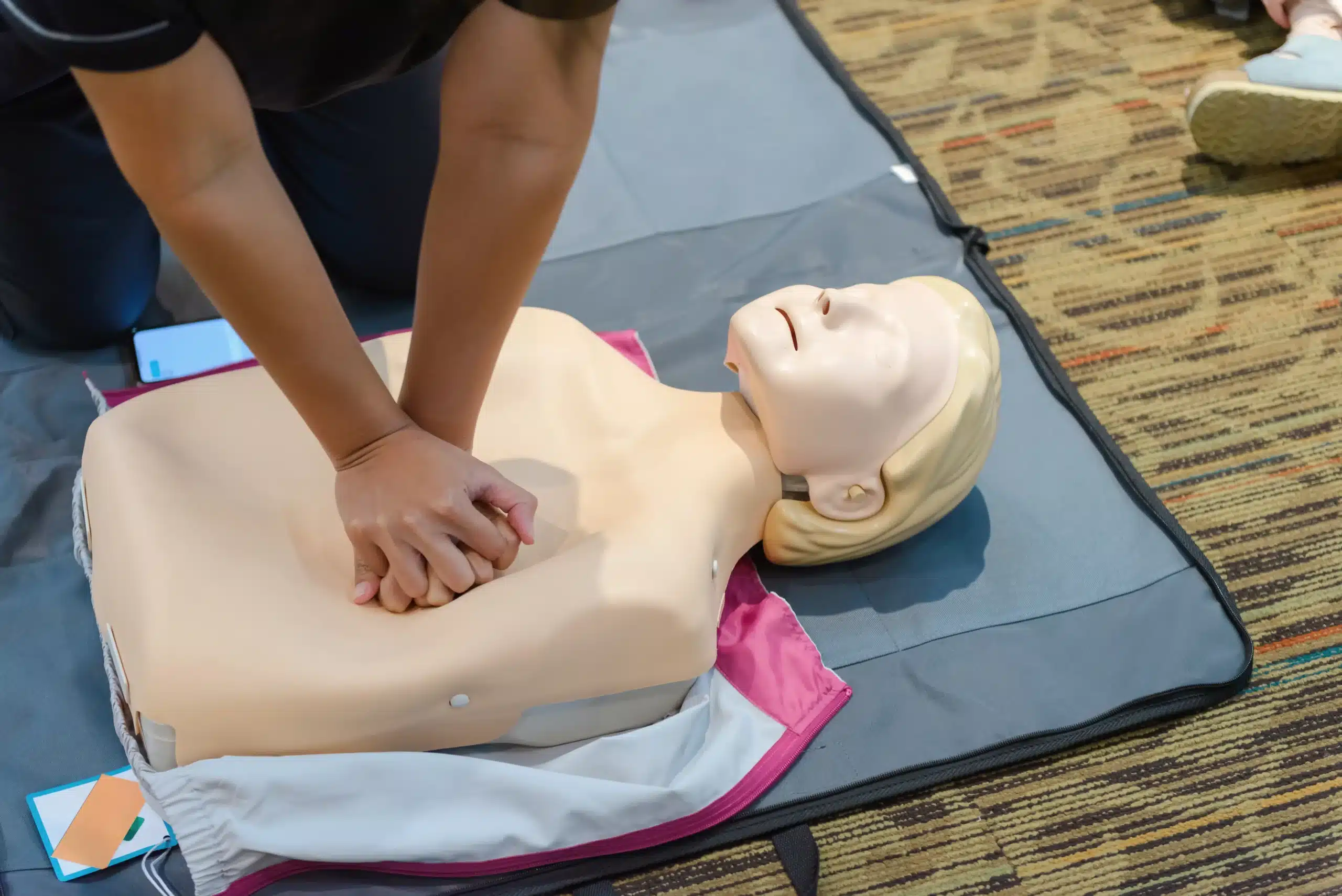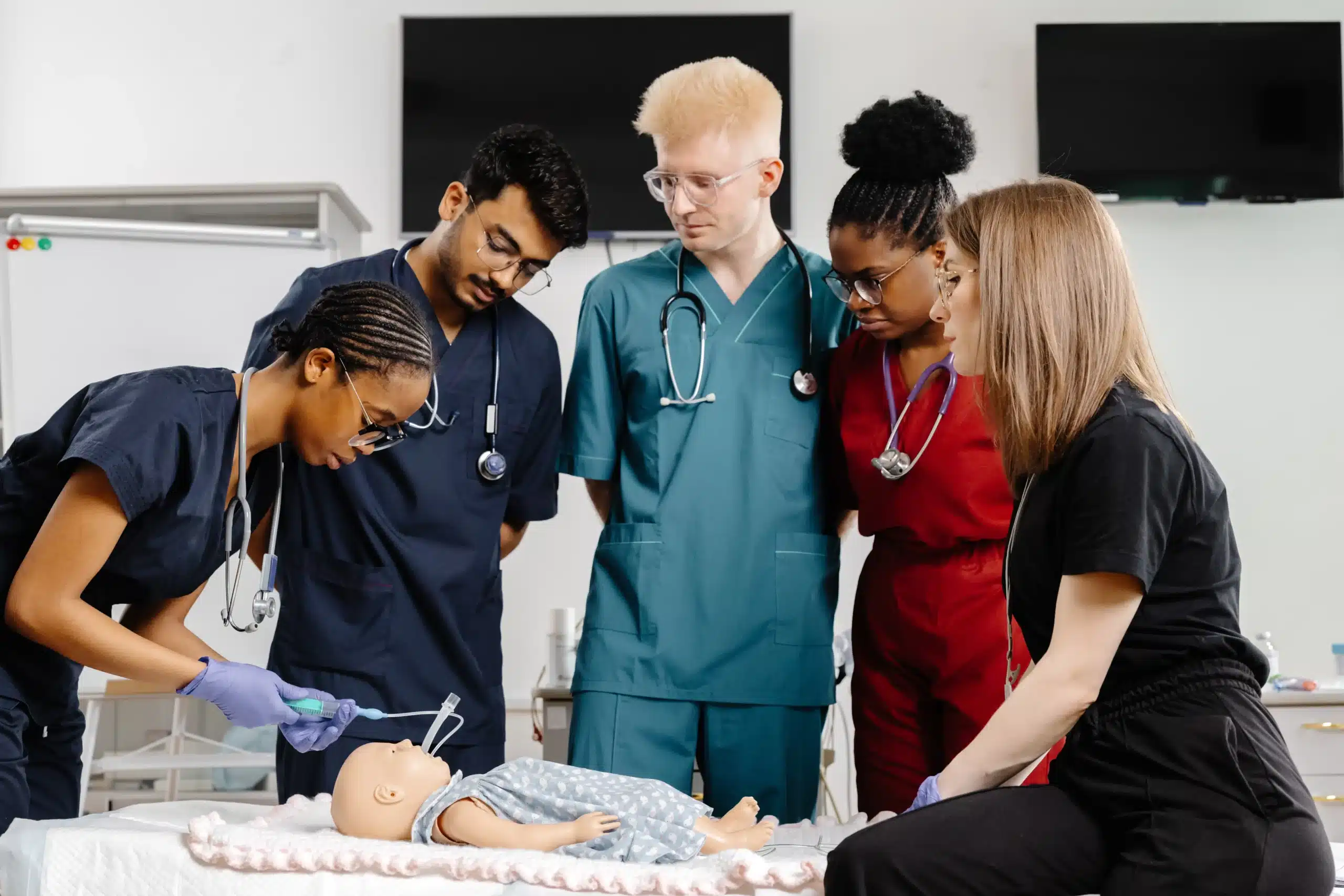In the vibrant and diverse SF Bay Area, ensuring the safety of our schools is paramount. A critical component of school safety is having a team of staff trained in CPR. This comprehensive guide delves into the essential aspects of CPR for school staff in SF Bay Area, offering practical advice and valuable resources. We’ll cover certification requirements, training options, budgeting considerations, and the benefits of onsite training. Whether you’re a teacher in San Francisco, a coach in Oakland, or an administrator in San Jose, this post will equip you with the knowledge and resources you need to create a safer learning environment for your students.
Key Takeaways
- CPR certification isn’t required by the state of California for all school staff, but many districts mandate it, especially for those working with younger children. Check with your district’s HR department for specific requirements. Providers like Safety Training Seminars offer convenient training options.
- Onsite CPR training offers hands-on learning and team-building opportunities, while online courses provide flexibility. Blended learning combines the best of both. Consider your staff’s needs and school resources when choosing a format.
- A comprehensive school CPR program involves regular training, certification tracking, and integration with your school’s emergency plan. Addressing common misconceptions about CPR and promoting a culture of preparedness are also key.
What are CPR Certification Requirements for School Staff in the SF Bay Area?
Understanding CPR certification requirements for school staff in the San Francisco Bay Area can feel a little overwhelming. While California doesn’t have a statewide mandate for all school employees, most districts understand the value of having trained staff. Let’s break down what you need to know.
Legal and Professional Standards
Many Bay Area school districts require teachers, especially those working with younger children or in roles like physical education, to maintain current CPR and first-aid certifications. These certifications usually cover adult, child, and infant CPR; using an AED; and basic first aid for common injuries, burns, and choking. You can find training programs covering all of this through providers like Safety Training Seminars. While the state doesn’t require CPR certification renewal for teaching licenses, individual districts often do. Most certifications are valid for two years, so keeping track of renewal dates is important. Our Northern California CPR Directory lists certified training centers near you.
District-Specific Policies
General guidelines are helpful, but the best way to understand the CPR certification requirements for your specific role is to contact your school district’s human resources or administrative office. Requirements can differ between districts, and some might have additional expectations beyond standard CPR and first aid, such as background checks or specialized training. Reaching out to your district directly ensures you’re meeting all the qualifications. Understanding your district’s policies helps create a safer environment for everyone and contributes to a better emergency preparedness plan.
Find the Right CPR Training for Your School Staff
Finding the right CPR training program for your school staff means balancing your budget, staff schedules, and learning goals. Here’s a look at the different training options:
In-Person Training Programs
In-person training gives your staff hands-on learning and direct interaction with certified instructors. This lets everyone practice CPR techniques in a safe environment and get immediate feedback. Onsite CPR training is convenient, as instructors can come to your campus. This minimizes disruptions to the school day and helps your staff build confidence and practical skills for real-life emergencies. Plus, learning and practicing together builds teamwork.
Online Certification Courses
Online CPR certification courses offer flexibility for busy schedules. These self-paced programs let individuals complete the coursework from anywhere, anytime. Online courses often include videos and interactive simulations. Many platforms, like CPR Select, offer certification recognized by the American Heart Association and other organizations. This works well for staff renewing their certification or who prefer to learn independently. Keep in mind, online courses usually require a separate in-person skills assessment for full certification.
Blended Learning Approaches
Blended learning combines online convenience with in-person instruction. Programs like HeartCode BLS let staff complete the course’s knowledge portion online and then attend a shorter in-person skills session. This hybrid approach offers flexibility while still providing the hands-on training necessary for effective CPR. Blended learning can also be more affordable, as it reduces in-person instruction time.
Hands-Only CPR Training
Hands-Only CPR focuses on chest compressions. It’s a vital skill for everyone, as it can dramatically improve survival odds during cardiac arrest. Community initiatives often offer free Hands-Only CPR training, making it an accessible resource. While comprehensive CPR training is best, Hands-Only CPR empowers staff and students to act quickly in an emergency, even without formal certification. This basic training can make a difference until professional help arrives.
Budgeting for School CPR Training: What to Expect
CPR training is a worthwhile investment, but it’s smart to understand the factors that influence cost. This section breaks down what to expect when budgeting for CPR training for your school staff in the San Francisco Bay Area.
Group Size Considerations
One of the first things to consider is the number of staff members requiring training. Pricing is often tiered—the more people you train at once, the lower the per-person cost. This can translate to significant savings. Contact providers like Safety Training Seminars to discuss group training options and explore potential discounts.
Training Type and Duration
The type of CPR training you choose also affects the overall cost. Basic Life Support (BLS certification) classes, for example, typically differ in price from First Aid or more advanced certifications like ACLS and PALS. Blended learning options, which combine online coursework with shorter in-person skills sessions, can often be more budget-friendly and offer scheduling flexibility. This format allows staff to complete the online portion at their own pace.
Provider Pricing Models
CPR certification costs in San Francisco can vary based on the training provider and the specific course. Research different providers and compare their pricing models. BLS classes in San Francisco typically range from $50 to $150, giving you a general idea of what to expect. Ask providers about available discounts or special rates for schools.
Potential School Discounts
Many CPR training providers offer discounts for schools and non-profit organizations. Inquire about these potential savings when contacting providers. Some may also offer special rates for large groups or recurring training sessions. Taking advantage of these discounts can make CPR training more accessible and affordable. Safety Training Seminars offers a low-price guarantee.
Benefits of Onsite CPR Training for Schools
Bringing CPR training directly to your school offers several key advantages for staff and administrators. Let’s explore some of the benefits of onsite CPR training:
Convenience and Flexibility
Onsite CPR training eliminates the need for staff to travel to offsite training centers, saving valuable time and resources. Providers like Safety Training Seminars can adapt to your school’s schedule, offering training sessions during staff meetings, professional development days, or other convenient times. This flexibility makes it easier for everyone to participate and minimizes disruptions to the school day. This approach also allows training to be tailored to the specific needs and environment of your school, covering potential emergency scenarios relevant to your student population. For example, an onsite provider can easily coordinate training sessions for different groups of staff throughout the school year.
Customized Instruction for School Environments
Onsite training allows instructors to tailor the curriculum to the specific needs of your school. They can incorporate real-life scenarios relevant to school settings, such as emergencies in classrooms, cafeterias, playgrounds, or during school events. This customized approach ensures that staff are well-prepared to handle situations they are most likely to encounter. For example, training can address emergencies common in younger children, like choking incidents, or focus on sports-related injuries for coaches and athletic staff. In-person training also allows for immediate feedback and clarification on specific questions or concerns related to your school’s unique environment. This direct interaction with the instructor can be invaluable in ensuring that staff fully understand the material and feel confident in their ability to respond effectively.
Team-Building Opportunities
Onsite CPR training can foster a sense of teamwork and camaraderie among school staff. Learning these life-saving skills together creates a shared experience and strengthens bonds within the school community. The collaborative nature of the training encourages communication and problem-solving skills, which can translate to improved teamwork in other areas of school life. Sharing real-life stories of individuals who used CPR to save lives can further inspire and motivate staff to learn these essential skills. This shared sense of purpose can contribute to a more positive and supportive school environment.
Increased Participation Rates
Offering onsite training often leads to higher participation rates among school staff. The convenience and accessibility of onsite sessions remove common barriers to attendance, such as travel time and scheduling conflicts. When training is readily available at the school, more staff members are likely to participate, leading to a greater number of trained individuals prepared to respond to emergencies. This increased participation contributes to a safer school environment for everyone. The San Francisco Community CPR Initiative highlights the importance of widespread CPR training in increasing the chances of survival during cardiac emergencies. By maximizing staff participation in CPR training, schools can create a network of trained responders, ready to act quickly and effectively in a crisis.
How to Renew CPR Certifications
CPR certifications typically expire after two years. While California’s state licensing body (CTC) doesn’t mandate CPR renewal for teaching licenses, many school districts require staff to maintain current certifications. This ensures teachers and other school personnel are prepared to handle emergencies.
Renewal Frequency
Most CPR certifications are valid for two years. It’s important to track your expiration date and plan for renewal. Setting reminders can help you stay organized. Some CPR training providers also offer automatic renewal reminders.
Maintaining Your Certification
The American Heart Association’s RQI program, offered by providers like Safety Training Seminars, is a convenient way to maintain your BLS skills and certification. RQI uses a blended learning approach, combining online modules with in-person skills sessions. This flexible format makes it easier to fit renewal training into a busy schedule.
Updating Skills with the Latest Guidelines
CPR guidelines are periodically updated. When you renew your certification, ensure your training incorporates these updates. For example, current guidelines from the American Heart Association emphasize compression-only CPR as the preferred method for most situations. Online learning options can make staying up-to-date on these evolving guidelines more accessible. Many providers offer online modules covering the latest changes, allowing you to learn at your own pace.
Create a School-Wide CPR Training Program
Getting your staff CPR certified is a big step toward creating a safer school environment. But how do you make it happen? Here’s how to build a school-wide CPR training program that’s effective and sustainable:
Create a Training Schedule
First, find a training provider that offers flexible scheduling. Safety Training Seminars, for example, offers a variety of CPR course schedules, including same-day certification. This flexibility makes it easier to accommodate everyone’s busy schedules. Consider offering multiple training sessions throughout the year so everyone has a chance to participate.
Track Staff Certifications
CPR certifications typically expire after two years. Create a system for tracking staff certifications and send out renewal reminders well in advance. Even if the state licensing body (CTC) doesn’t require renewal for teaching licenses, your school district might. Staying on top of these certifications ensures your school remains compliant and your staff’s skills are current. A simple spreadsheet or an online tool can help you manage these records.
Address Common Misconceptions
One of the biggest hurdles to effective CPR training is overcoming common misconceptions. Some people hesitate to perform CPR because they’re unsure about the proper technique or fear they’ll cause harm. Debunking these myths is crucial. Openly discuss these concerns during training and provide clear, factual information. This empowers your staff to act confidently in emergencies.
Integrate CPR Training with Professional Development
CPR training shouldn’t be a one-time event. Integrate it into your school’s professional development program. This reinforces the importance of these life-saving skills and keeps them fresh in everyone’s minds. Regular refresher courses can also help staff maintain their skills and learn the latest guidelines. By investing in ongoing training, you’re building a culture of preparedness and showing your commitment to student and staff safety.
Top CPR Training Providers in the SF Bay Area
Finding the right CPR training provider is crucial for schools. Here’s a rundown of some reputable options in the San Francisco Bay Area:
Safety Training Seminars
Safety Training Seminars offers various American Heart Association (AHA) certified courses, including CPR, BLS, ACLS, PALS, and First Aid. They focus on providing affordable and convenient training options throughout the Bay Area, including San Francisco, San Jose, Oakland, Sacramento, Berkeley, and Concord. Check out their website for course schedules and pricing. Their streamlined approach to the RQI program makes recertification quick and efficient. For schools looking for the best value, they also offer a low-price guarantee. Contact them to learn more about bringing a CPR class to your school.
American Red Cross
The American Red Cross is a well-known provider of CPR and BLS certification and renewal training. They offer a range of AHA-certified courses, making them a reliable choice for individuals and groups. You can explore their course offerings on their website.
American Heart Association
While the AHA doesn’t directly provide training, they set the standards. Many organizations, like Bay Area CPR, offer AHA-certified BLS training, including the HeartCode BLS blended learning option. This allows for a flexible approach to learning. Find a training center near you.
Local Fire Departments and EMS Agencies
Your local fire department or EMS agency often provides CPR training and certification courses. These courses are frequently tailored for schools and community organizations, ensuring staff have essential life-saving skills. Reach out to your local agencies for more information. You can often find a directory of local providers online.
Heart Start CPR
Heart Start CPR offers convenient on-site CPR and first aid training for various groups, including corporations, small businesses, schools, and healthcare facilities. They use both AHA and American Safety and Health Institute (ASHI) curriculum, giving you options to choose from.
Vive CPR
Vive CPR is another provider of on-site CPR and first aid training in the San Francisco Bay Area. As an AHA Training Site, their certifications meet California state and OSHA requirements. This can simplify compliance for schools and businesses.
Why CPR Training Matters in Schools
CPR training in schools is about more than just checking a box; it’s about equipping students and staff with the skills to potentially save lives. It creates a safer environment for everyone and fosters a culture of preparedness. Let’s explore why this is so crucial:
Potential Emergency Scenarios
Schools are dynamic environments, and while we hope for the best, it’s essential to be prepared for the unexpected. Accidents can happen during sports activities, in classrooms, or even on the playground. A student might choke on their lunch, experience a sudden cardiac event, or suffer an injury that requires immediate intervention. CPR training empowers individuals to respond effectively in these critical moments, providing essential care until professional medical help arrives. This training also includes AED instruction, teaching participants how to use these devices to restore normal heart rhythm during a cardiac arrest.
Impact on Student and Staff Safety
Having trained staff and students on campus significantly enhances the overall safety of the school community. When a medical emergency arises, seconds can matter. CPR certification ensures that there are individuals on hand who can immediately begin life-saving procedures, increasing the chances of a positive outcome. This preparedness not only protects students but also provides peace of mind for parents and staff, knowing that there’s a network of trained responders ready to act. For a directory of CPR resources in Northern California, visit our directory.
Build a Culture of Preparedness
Integrating CPR training into the school curriculum goes beyond simply teaching a skill; it cultivates a culture of preparedness and empowers individuals to take action in emergencies. Sharing real-life stories of people who have used CPR to save lives can inspire students and staff to acquire these vital skills. By normalizing CPR training and making it accessible through options like our RQI classes, schools can create a community that is prepared and confident in its ability to respond to emergencies. This proactive approach not only benefits the school environment but also extends to the wider community as students carry these skills with them throughout their lives. If you’re interested in learning more about CPR training options for your school, don’t hesitate to contact us. We also offer a low price guarantee.
Integrate CPR Training with School Emergency Preparedness
Integrating CPR training with your school’s existing emergency preparedness plan is crucial for a safe learning environment. This proactive approach empowers both staff and students to respond effectively during critical moments. Here’s how to seamlessly blend CPR training into your school’s safety protocols:
Align CPR Training with Existing Safety Policies
Start by reviewing your school’s current emergency action plan. Identify areas where CPR training can enhance existing procedures, such as responding to medical emergencies. Ensure your CPR training program aligns with these policies, creating a cohesive approach to school safety. Beyond student training, prioritize CPR certification for all school staff, including teachers, administrators, and support personnel. Equipping everyone with these life-saving skills creates a network of trained responders. This ensures a consistent and effective response to any medical emergency within the school. For more information on CPR in schools, visit this helpful resource.
AED Training and Placement
Automated External Defibrillators (AEDs) are essential tools in any emergency response. Make sure your staff receives comprehensive training on how to properly use AEDs alongside CPR. Clearly marked and accessible AEDs should be strategically placed throughout your school. Conduct regular drills to familiarize staff with AED locations, ensuring quick access during an emergency. The San Francisco Community CPR Initiative offers valuable resources on AED placement and training.
Schedule Regular Emergency Drills
Regular emergency drills reinforce training and ensure preparedness. These drills should simulate various emergency scenarios, allowing staff and students to practice their CPR skills and AED use. Debriefing after each drill is crucial for identifying areas for improvement and refining your school’s emergency response. Sharing real-life stories of individuals who used CPR to save lives can emphasize the importance of these skills and encourage ongoing training. Consider incorporating online learning options to make CPR training more accessible. Contact Safety Training Seminars to learn more about how we can help you develop a comprehensive CPR training program for your school.
Onsite vs. Online CPR Training: Which is Right for Your School?
Choosing the right CPR training format for your school staff means understanding the differences between onsite and online options. Each has its own pros and cons, so consider your school’s specific needs and resources to make the best decision.
Factors to Consider
Several key factors can influence your choice:
-
Accessibility and Convenience: Online training offers great flexibility, allowing staff to complete CPR certification at their own pace and on their own schedule. This is especially helpful for busy schedules or staff at multiple locations. Onsite training, however, provides dedicated time and space for focused learning, minimizing distractions.
-
Training Environment: Onsite training creates a structured learning environment with direct interaction with instructors. This allows for real-time feedback and hands-on practice, which can be especially helpful for some learning styles. Online training, while flexible, may not offer the same level of interaction.
-
Staff Participation: Think about your staff’s learning preferences and comfort with technology. While online learning is convenient, some staff may prefer the traditional classroom setting. Aim for a training format that encourages everyone to participate and stay engaged. Equipping both students and staff with these skills creates a safer school.
Pros and Cons of Each Option
Here’s a breakdown of the pros and cons of each training format:
Onsite Training Pros:
- Hands-on Practice and Feedback: Onsite training provides hands-on practice with CPR manikins and immediate feedback from certified instructors. This direct interaction ensures proper technique and answers individual questions.
- Real-Life Preparedness: The structured environment and hands-on practice of onsite training can better prepare staff to respond confidently in emergencies. Having CPR-trained staff on hand is essential in these situations.
Onsite Training Cons:
- Scheduling Challenges: Coordinating schedules for all staff members to attend an onsite training session can be difficult and may limit participation.
Online Training Pros:
- Flexibility and Self-Paced Learning: Online training offers flexibility, allowing staff to complete the coursework when it’s convenient for them. This adaptability makes it easier for staff with different schedules to participate.
Online Training Cons:
- Limited Hands-on Practice: While online training covers the basics of CPR, it may not have the hands-on practice that some districts require. Some districts mandate hands-on training to ensure staff are fully prepared.
Related Articles
- CPR Training in Northern California: A Complete Guide – San Francisco Bay Area CPR Classes
- Find CPR Certification Near Me: A Practical Guide – San Francisco Bay Area CPR Classes
- CPR Renewal in San Jose: A Complete Guide
- CPR Training in Sacramento: A Ultimate Guide
- Best Online CPR Classes in San Jose: Top 5 Picks – San Francisco Bay Area CPR Classes
Frequently Asked Questions
Is CPR certification required for all school staff in California?
California doesn’t have a statewide mandate requiring CPR certification for all school staff. However, many school districts in the San Francisco Bay Area require certain staff members, especially those working with younger children or in specific roles, to be certified. It’s always best to check with your school district’s HR department for their specific requirements.
What are the different types of CPR training available for schools?
Several CPR training options cater to different needs and budgets. In-person training offers hands-on learning and direct interaction with instructors. Online courses provide flexibility for busy schedules, while blended learning combines online coursework with shorter in-person skills sessions. Hands-Only CPR training focuses on chest compressions and is often available through free community initiatives.
How much does CPR training for school staff typically cost?
The cost of CPR training varies depending on several factors, including the number of participants, the type of training, and the training provider. Group discounts are often available, and some providers offer special rates for schools. Contacting providers directly is the best way to get accurate pricing information. Safety Training Seminars, for example, offers a low-price guarantee.
How often do CPR certifications need to be renewed?
Most CPR certifications are valid for two years. It’s essential to keep track of expiration dates and renew certifications promptly to maintain compliance with district policies and ensure staff are prepared to respond to emergencies. The American Heart Association’s RQI program offers a streamlined renewal process.
What are the key benefits of having a school-wide CPR training program?
A school-wide CPR training program creates a safer learning environment for everyone. It equips staff and students with the skills to respond effectively in medical emergencies, increasing the chances of positive outcomes. It also fosters a culture of preparedness and empowers individuals to take action when needed.







